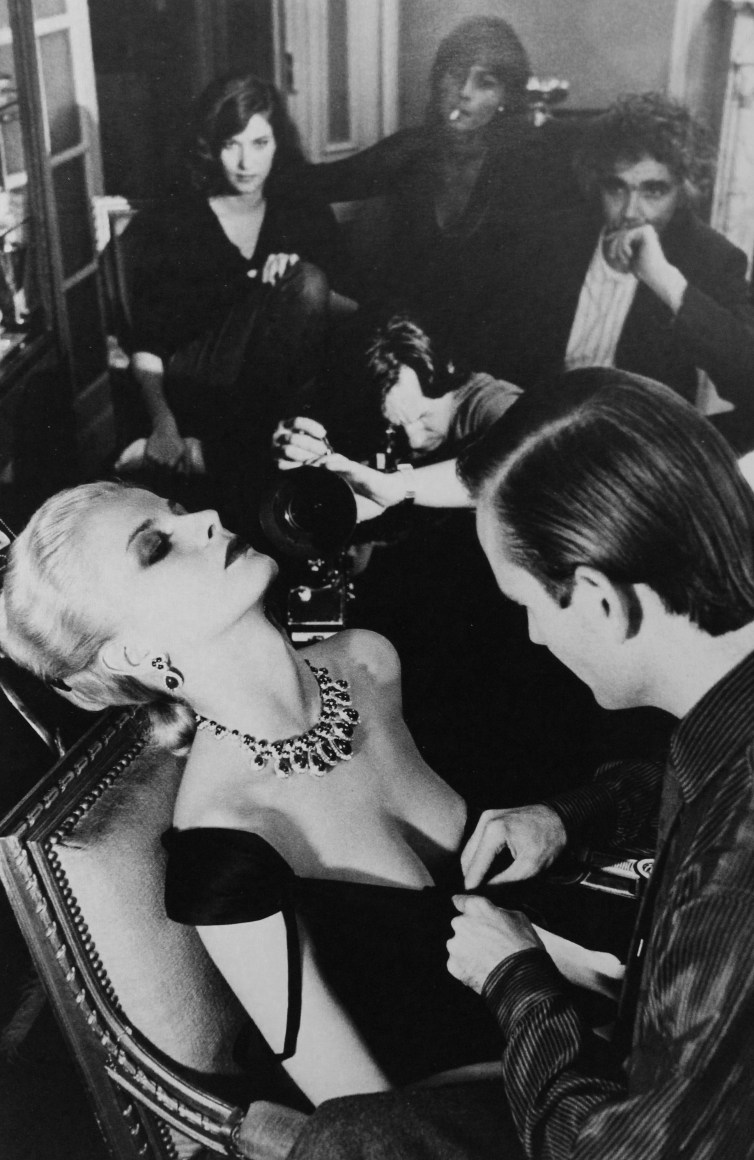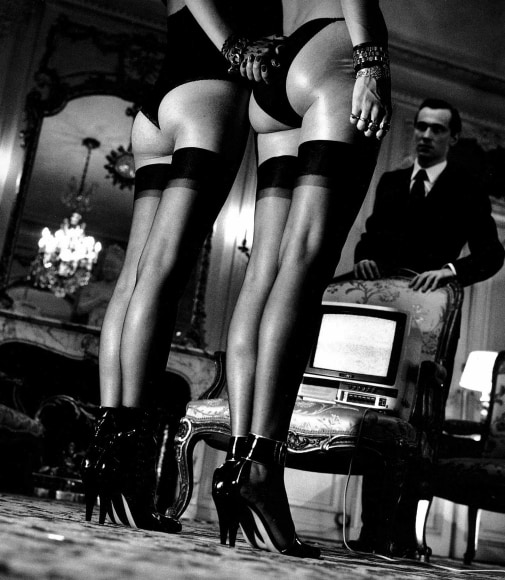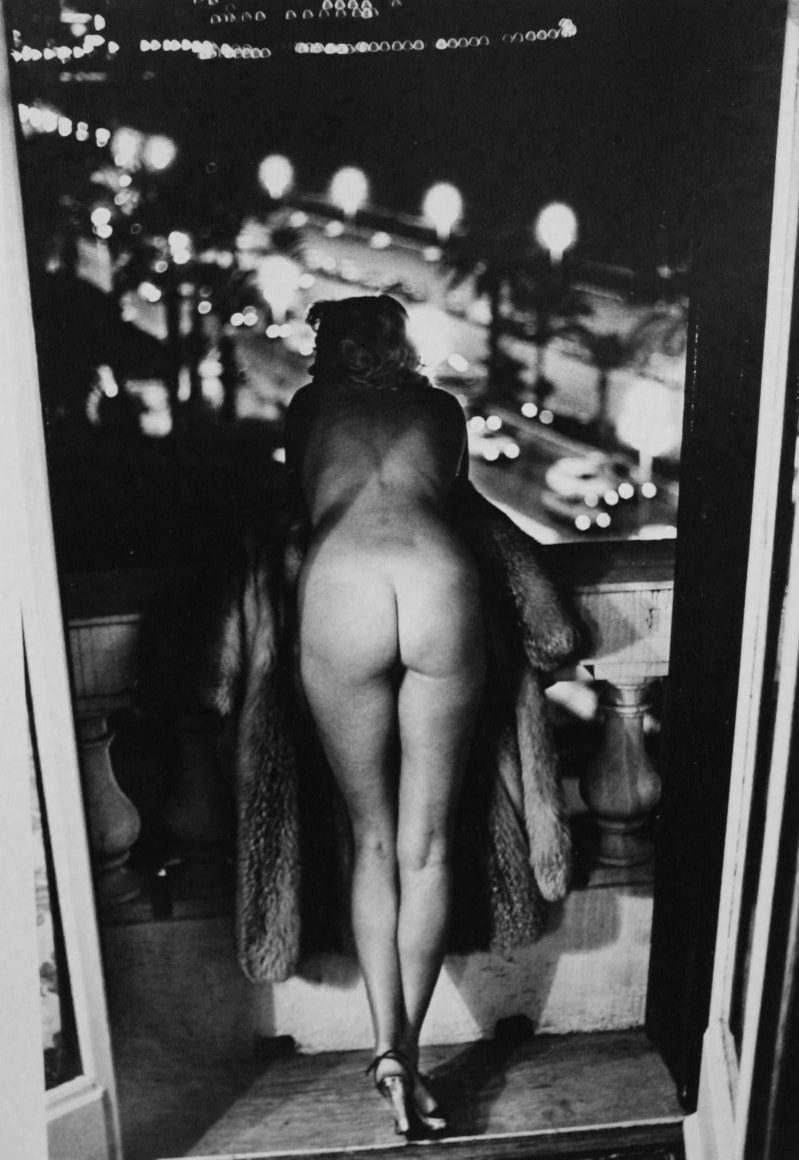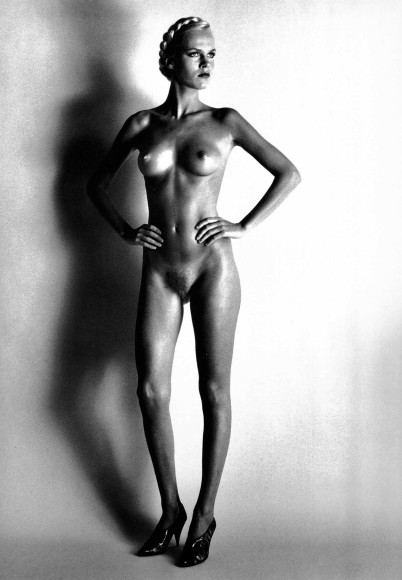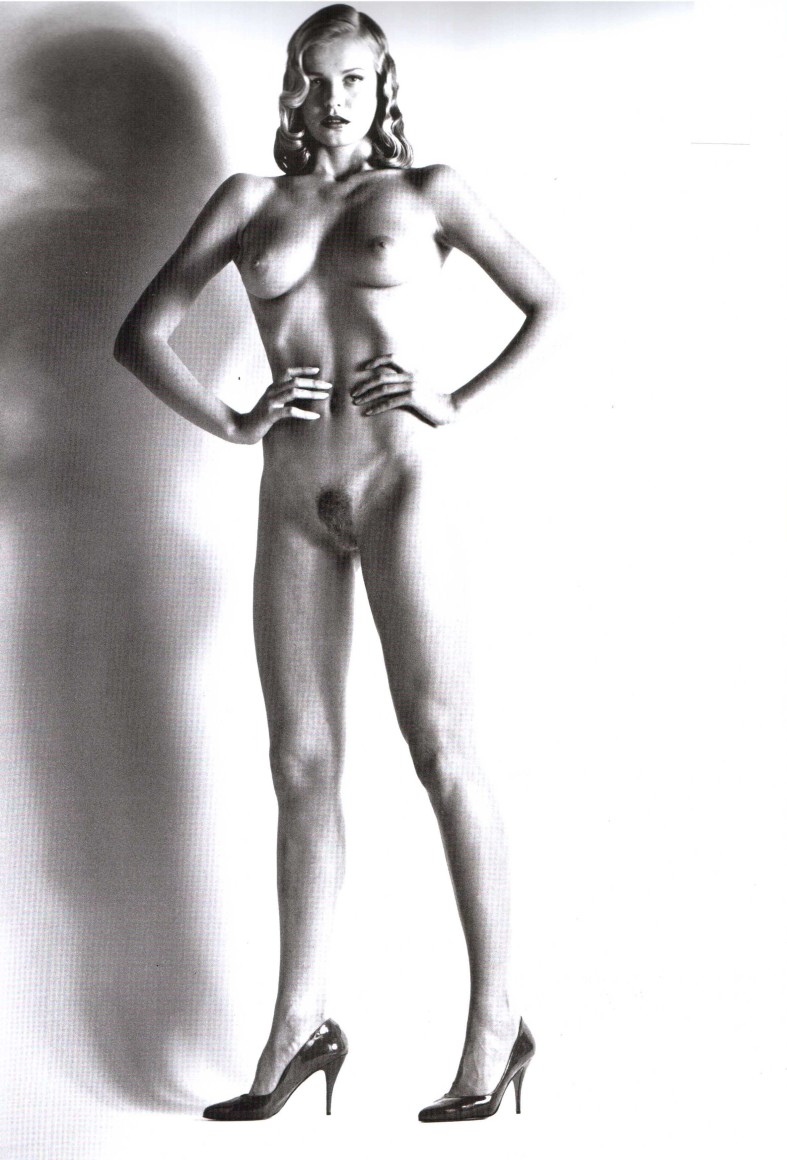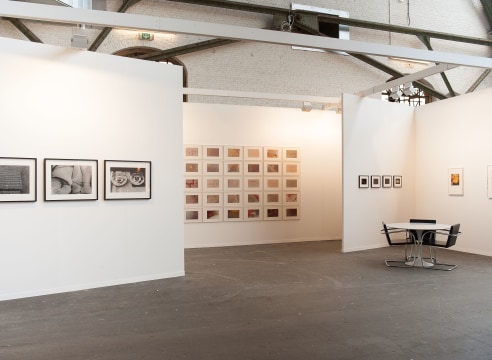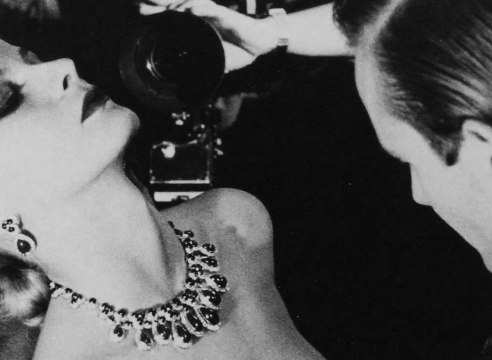
Helmut Newton est un photographe majeur dont le style a bousculé et renouvelé l’image de mode avec une impétuosité inédite. Portraits, nus, photographies de mode, voilà comment résumer en trois mots son travail. Ces trois thèmes, ces trois directions, sont inextricablement liées, et la photographie de mode se mêle à la fois de nu féminin et de portrait érotique. Pour Newton, d’ailleurs, l’essence même du travail du photographe de mode est de ne pas faire de photographie de mode. Le commercial disparaît derrière un autre propos. « Je crois toujours que la photographie de mode parfaite est une photographie qui ne ressemble pas à une photographie de mode. C’est une photographie qui ressemble à une image tirée d’un film, qui ressemble à un portrait, peut-être une photo souvenir, ou encore un cliché de paparazzi, tout sauf une photographie de mode.»
Pourtant, si la bonne photographie de mode ressemble à s’y méprendre à la photographie d’art, Newton se refusera à considérer son œuvre comme artistique. « La photographie de certaines personnes est de l’art. Pas la mienne. Si mes travaux peuvent être exposés dans des galeries ou des musées, c’est bien. Mais ce n’est pas la raison pour laquelle je les fais. » Son travail à lui est celui d’un mercenaire moderne, un tueur à gages (« I’m a gun for hire ») qui met toute sa connaissance et son art au service de son commerce, au service du commerce des autres. Ces autres, ce sont les plus grands magazines, Vogue français, italien, américain, australien, anglais et allemand, Elle, Playboy, Marie-Claire, Queen, Nova, Oui, ou encore Vanity Fair. À travers ces magazines, qui ont largement diffusé ses clichés, il déploie sa vision, son style, son idée de la Femme.
Car le point central de son œuvre, c’est la Femme, qu’il décrit forte, maître d’elle-même et de son corps, fière et sculpturale dans sa nudité. Les Big Nudes en sont des exemplaires ; puissant, froid, distant, rigide, le modèle s’exhibe presque comme un défi, une affirmation de soi. Les photographies de Newton, à l’érotisme omniprésent, sont marquées par cette dynamique, où le corps féminin s’affirme, dominant et provoquant le spectateur, le renvoyant à son rôle de voyeur. Pour Newton, d’ailleurs, « Si un photographe prétend qu’il n’est pas un voyeur, c’est un idiot. » La familiarité la plus controversée est ainsi exposée au grand jour, libérée des normes sociales, mais rendue acceptable par le traitement léché et froid de la photographie, par sa composition très travaillée, par la déification et la fascination de la femme. Voyeurisme, fétichisme, sadomasochisme, saphisme, et désir sexuel sous toutes ses formes, se mêlent ainsi à une esthétique épurée et hybride, imprégnée par l’érotisme sombre et latent de la photographie surréaliste des années 1930, ainsi que de photojournalisme, et de New Wave, le tout créant des clichés novateurs, et une interprétation hautement stylisée et non conventionnelle d’un mode de vie privilégié, à la fois élégant et décadent.
Photographe sans tabous, testant sans relâche les limites du socialement acceptable, contestant les rôles de genre avec ses femmes dominatrices, dangereuses, amazones sculpturales à la sexualité libre et puissante, il aura su séduire son époque, et se faire accepter hors du cercle de la photographie de mode sensuelle, produisant des portraits de personnalités comme Margaret Thatcher, Salvador Dali, David Bowie ou Charlotte Rampling. Ses portraits, publiés notamment dans des magazines comme Vanity Fair, ont marqué par leur simplicité et leur honnêteté, exprimant une autre facette du photographe, dont les clichés controversés n’ont pas seulement joué des codes de l’érotisme, mais également instauré une libération du genre d’une façon moins outrancière, étant à l’origine de l’iconique cliché du Smoking Yves Saint Laurent, où l’émancipation de la femme passe aussi par une androgynie feutrée.
Né à Berlin en 1920 sous le nom de Helmut Neustädter, Helmut Newton étudie à l’American School de Berlin, puis fait un apprentissage auprès de la photographe Yva (pseudonyme d’Else Ernestine Neuländer-Simon), connue pour ses portraits et ses nus oniriques. Après avoir travaillé à Singapour et en Australie (dont il prend la nationalité en 1946), il travaille dans les années 1960 à Paris pour les magazines Vogue et Elle. Consacrant sa carrière commerciale, il a sa première exposition personnelle en 1975, et obtient en 1990 le Grand Prix national de la Photographie française. Il s’éteindra en 2004 à Los Angeles, peu après la création de la Fondation Helmut Newton. Récemment, ses œuvres ont été exposées à la Neue Nationalgalerie (Berlin, 2000), dont la rétrospective célébrant ses 80 ans voyagera à Londres, New York, Tokyo, Moscou ou Prague ; ainsi qu’à la Hamiltons Gallery (London, 2009-2011), Grand Palais (Paris, 2012), Newton Foundation (Berlin, 2012-14-15), Foam Fotografiemuseum (Amsterdam, 2016), Helmut Newton Foundation (Berlin, 2016), Casa dei Tre Oci (Venice, 2016). Ses œuvres sont principalement conservées dans les collections de la Helmut Newton Foundation (Berlin).
Helmut Newton is a major photographer, whose style overwhelmed fashion imagery like no other before. Portraits, nudes, fashion photograph, are the main focus of his works, and the three themes interweave, fashion photography mingling with nudes and erotic portraits. For Newton, moreover, the nature of fashion photography itself is to produce something else than fashion photography “I still believe that the perfect fashion photograph is a photograph that does not look like a fashion photograph. It’s a photograph that looks like something out of a movie, like a portrait, maybe a souvenir shot, maybe a paparazzi shot, anything but a fashion photograph”.
Yet, if a good fashion photograph looks very much like art, Newton will always refuse to consider his own work as artistic “Some people's photography is an art. Mine is not. If they happen to be exhibited in a gallery or a museum, that's fine. But that's not why I do them. I'm a gun for hire.” His work is that of a mercenary, proposing his knowledge and mastery to other’s business. The clients he works for are major magazines, like Vogue (together French, Italian, American, Australian, English and German issues), Elle, Playboy, Marie-Claire, Queen, Nova, Oui, or Vanity Fair. Through these magazines, which largely spread his pictures, he deploys his vision, his style, and his idea of Women.
Indeed, the central point of his work is the Woman, described as strong, determined, proud of her body and statuesque in her nudity. The Big Nudes are emblematic of this powerful, cold, distant, strict woman exposing herself with assertiveness, as a dare and a statement. In Newton’s photograph, where eroticism is omnipresent, the female body claims itself, dominative and provocative, sending the viewer back to his voyeur status. Indeed, to Newton “If a photographer says he is not a voyeur, he is an idiot”. The most controversial intimacy is laid out, free from social conventions, but made acceptable thanks to the distant, slick treatment of the picture, its refined composition, and the awe deification of the woman. Voyeurism, fetishism, sado-masochism, sophism, and sexual desire of every form, are mingling with a hybrid aesthetic, influenced by the 1930’s surrealist pictures of a latent and dark eroticism, as well as photojournalism and the New Wave, all these influences creating innovative photographs, and a highly stylized and unconventional interpretation of a privileged way of life, both decadent and elegant.
Free from any taboo, relentlessly challenging the limits of what is socially acceptable, and of the genre roles with his dominative, dangerous women, statuesque amazons with a powerful and free sexuality, The King of Kink seduced his contemporaries, making a name also out of the fashion erotic circle. He would produce portraits of such personalities as Margaret Thatcher, Salvador Dali, David Bowie or Charlotte Rampling, whose pictures marked by their simplicity and honesty. This also shows another face of the photographer, whose contentious works not only played with the codes of eroticism, but also initiated a liberation in a less show-off way, being at the origin of the mythic picture of Yves Saint Laurent’s Smoking, where women empowerment also goes through a subdued androgyny.
Born in Berlin in 1920, under the name of Helmut Neustädter, Helmut Newton studied to the Berlin American School, before doing an apprenticeship with the famous photographer Yva (Else Ernestine Neuländer-Simon) who created dreamlike portraits and nudes for the fashion industry. Newton worked in Singapore, Australia (and took the Australian nationality in 1946), and then settled in Paris in the 1960’s, where he produced fashion photographs for magazines such as Vogue or Elle. Following a successful career in commercial and fashion photography, he settled his first solo exhibition in 1975, and in 1990 was awarded the French “Grand Prix national de la Photographie”. He passed away in 2004 in Los Angeles, few months after creating the Helmut Newton Foundation. Recently, his works have been exposed in the Neue Nationalgalerie (Berlin, 2000) on the occasion of his 80th birthday retrospective, which travelled in London, New York, Tokyo, Moscow or Prague. His works have also been featured in exhibits in the Hamiltons Gallery (London, 2009-2011), Grand Palais (Paris, 2012), Newton Foundation (Berlin, 2012-14-15), Foam Fotografiemuseum (Amsterdam, 2016), Helmut Newton Foundation (Berlin, 2016), Casa dei Tre Oci (Venice, 2016). His work is mainly owned by the Helmut Newton Foundation (Berlin).

